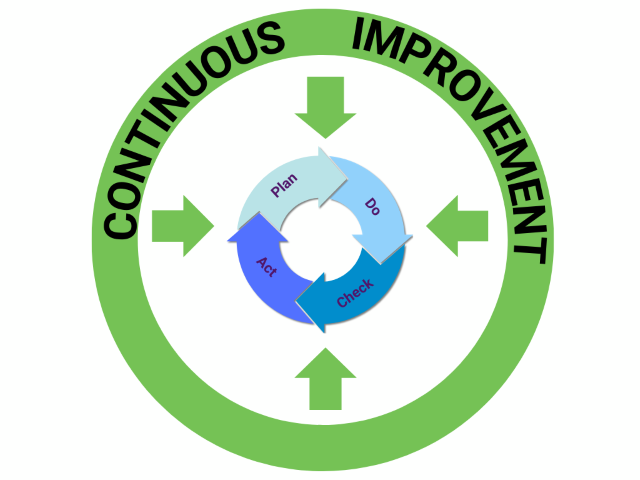Continuous Improvement Software
Continuous Improvement software automates the tasks of constantly identifying, evaluating, completing, and monitoring changes targeted to achieving better products, processes, and services so organizations can achieve improved profitability.
It enables organizations to successfully manage the two-tier system of continuous improvement by automating tasks and making data accessible and transparent.

Manage the Two-Tier Continuous Improvement System with Great CAPA Software
The continuous Improvement process has two tiers of activity that must be supported if an organization’s efforts will be successful.
Tier 1. Support constant readiness to incorporate meaningful ideas and adjustments as they occur anywhere in your system.
Tier 2. Manage the improvement cycle to prioritize, complete, monitor and provide feedback on accepted changes.

Continuous Improvement Software for QMS
Continuous Improvement software provides support for a complete range of corrective and preventive management tasks. Complexity is reduced in the activities of reporting, tracking, and analyzing discrepant events, materials, and processes. Consistent confirmation of outcome resolution is reached by verifying the defined corrective and preventive actions have occurred and are effective.
Robust continual improvement integrates with processes critical to compliance control and incorporates tracking and approval of such actions as change control, audit, customer complaints, financial adjustments and supplier management that are critical to effective continuous improvement.
Deliver Continuous Improvement with Familiar Processes
Why Use Software for Continuous Improvement?
- Decreases the cost of supporting continuous improvement policies.
- Reduces risk of failing to meet ISO standards or other regulations and certifications.
- Accelerate problem identification and resolution to prevent additional impacts.
- Relieve managers of non-productive administrative and data compiling tasks.
- Reduces complexity of understanding and decision making using clear process controls.
Why Unintegrated Continuous Improvement Systems Pose Risks
Systems managed through a blend of paper records, spreadsheets, and emails dispersed across multiple repositories will make data harder to compile and monitor. This heightens the risk that recommendations will go unreported or will fail to be handled in a timely manner. This can cause employees and other stakeholders to believe that there is no commitment by leadership in the goals of continuous improvement.

Unintegrated continuous improvement systems make employee participation difficult because they require more time to access and have burdensome procedural steps that are confusing or hard to understand. This results in the development of offline systems or informal methods of addressing problems which increases costs and heightens risk.
Integrated CIP system software diminishes these risks by simplifying and speeding the tasks of continuous improvement , so staff can easily more easily understand and participate in the needed activities.
Properties of the Best Continuous Improvement Software
The best continuous improvement software has 4 properties.
It is affordable, accountable, configurable, and comprehensive. It supports easy participation by all stakeholders, reduces complexity, achieves meaningful cost reduction, and manages risk.
Affordable – Has a licensing model that ensures stakeholders participate easily in the continuous improvement management policies.
Accountable – All data is shared so expected action is taken, and outcomes are constantly monitored and re-evaluated.
Configurable –The software is easily tailored to the needs of the organization.
Comprehensive – Out of the box functionality supports a wide variety of continuous improvement tasks and conforms to of the organization’s needs.
Get Started Now
Contact Information
SALES
sales@qualityessentialssuite.com
+1 (866) 949-9504, ext 811
SUPPORT
support@qualityessentialssuite.com
+1 (866) 949-9504, ext 2


